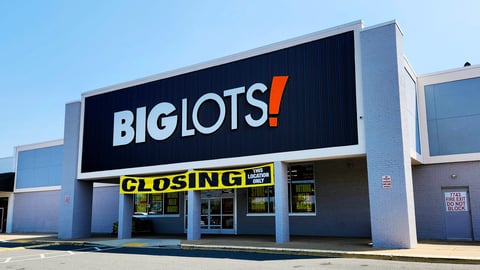5Qs for ElmTree's Michael Carreon on the importance of industrial properties
E-commerce has forever changed the way consumers shop and how retailers do business.
While commercial real estate space for new stores is at historic lows, retailers are eyeing industrial space to expand e-commerce and supply chain operations. Chain Store Age spoke with Michael Carreon, managing director of acquisitions at St. Louis-based real estate investment firm ElmTree Funds, to learn more about the demand for industrial real estate properties and what types of assets retailers are looking for.
What is the current state of demand of industrial real estate properties? How has this changed post-pandemic?
Corporate demand for industrial properties has remained strong due to several secular trends including continued growth in e-commerce sales, onshoring and nearshoring of supply chains, and a need for newly constructed buildings that can facilitate modern supply chain strategies such as the incorporation of automation and robotics.
In terms of changes post-pandemic, the U.S. industrial market has experienced a mismatch between supply and demand over the past couple of years due to significant construction activity during the pandemic-driven, low-interest-rate environment of 2021 and 2022. However, most of this construction activity has now been delivered into the market and demand is expected to start outpacing supply again in 2026, which provides a nice backdrop for robust leasing fundamentals in the industrial sector over a mid-term horizon.
What geographic locations have the most industrial properties available currently?
According to CoStar, some larger markets with vacancy rates and availability rates above the national average include Dallas, Atlanta, the inland empire in California, Phoenix, Indianapolis, and Charlotte. These markets have all experienced significant construction activity over the last few years due to their favorable locations relative to transportation infrastructure and large population bases.
[READ MORE: 5Qs for real estate attorney Jared Rothkopf on retail’s leasing frenzy]
Thus, we expect most of these markets will eventually work through their available space over the next few years and the high availability likely represents more of a timing issue with a lot of recent deliveries rather than a substantial change in market fundamentals.
How is technology impacting the demand for industrial spaces for retailers?
Retail tenants are increasingly looking to incorporate automation and robotics within their industrial facilities to drive down costs and decrease delivery times. As a result, we are seeing significant tenant interest in Class A, build-to-suit industrial facilities that feature the proper building specifications to accommodate robotics and automation.
What size properties are retailers looking at the most?
We are seeing demand across the size spectrum within the build-to-suit industrial market due to a need for tenants to move to new facilities to improve supply chain efficiency and decrease delivery times to compete with competitors employing similar supply chain revitalization strategies. More specifically though, we are probably seeing the most demand within the 300,000-to-800,000-sq. ft. category.
Retail rents are continuing to rise. Are industrial rents following a similar trend? If so, what is the outlook for the remainder of 2025?
According to CoStar, asking rents for industrial space grew two to three percent in 2024. This level of growth does represent a fairly sizable decrease relative to the seven to ten percent annual rent growth experienced in 2021-2023. However, as mentioned prior, the decline in rent growth is primarily due to a timing mismatch between deliveries coming into the market and a stabilizing of tenant demand growth to more normalized growth levels.
Looking forward, we believe demand will begin to outpace supply in the industrial sector again in 2026 due to several secular growth trends – such as e-commerce, onshoring/nearshoring, and incorporation automation/robotics. The limited construction starts in the sector over the last couple of years due to the higher interest rate environment and general tightening of capital markets/lending activity. The trends should allow the sector to return to mid-single digit annualized rent growth – potentially three to five percent – over a mid-term horizon.




